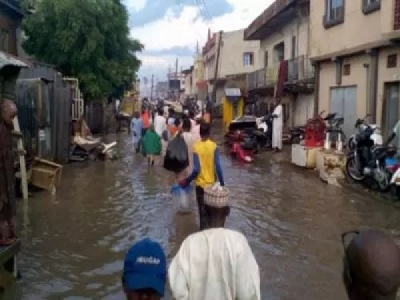
Posted on September 26, 2018
In September 2009, the federal government officially commissioned the herculean task of dredging River Niger.
During a ceremony in Lokoja, the late President Umaru Musa Yar’Adua vividly spoke of his sevenpoint agenda, saying that the project would help in the realisation of his regime’s Vision 20-2020 dreams.
There was a thunder clap from excited Nigerians, especially those whose communities are traversed by the river, as they welcomed the bold initiative.
They also saw the task, when accomplished, as breaking a 43-year-old jinx.
It was hoped that River Niger would experience an incursion – the kind it had not faced since the days of explorer Mungo Park.
As the then transport minister, Alhaji Ibrahim Bio, explained at the ceremony, 572km of the river would be dredged across eight states from Delta through Anambra to Niger, and some 152 communities.
The project was to be executed within three or so years.
The late Yar’Adua stated that the dredging would “provide unobtrusive, cheaper and safer means of haulage of goods and trading activities among adjoining communities and people of states neighbouring Lower River Niger.” It would then be possible to reach Onitsha in Anambra state from Lokoja in Kogi state within 50 minutes by speed boat and not eight hours or longer by road.
Given the deplorable condition of the network of roads along the axis now, it should take longer hours.
About nine months after the commencement of the dredging exercise, Yar’Adua passed on.
And as it is typical of the mentality of our leaders, the project was pursued desultorily and later abandoned.
As at 2009, the condition of the river was nowhere as terrible as it is today.
Our leaders did not appreciate the dual benefits of the exercise – boost the water transportation and free flow of water along the course of the river.
But three years later, precisely in 2012, Nigeria experienced perhaps the worst fury of flood along the river in 50 years, killing no fewer than 500 people.
Economic life was halted and an estimated total of seven million people were affected, while damages and losses caused by the floods were put at N2.6 trillion in the 30 states affected.
The then President Goodluck Jonathan had declared the flooding as a “national disaster” and established a National Committee on Flood Relief and Rehabilitation.
On October 9, 2012, his administration announced it was providing $110m in financial assistance.
In the areas affected by flooding, the displaced are huddled together in camps set up by the state governments.
Ironically, the disaster came calling at the time the dredging exercise would have been completed and Nigeria would have been spared the yearly disasters.
The late Yar’Adua saw the future! There was a relative respite between the 2012 episode and the current flooding being experienced in the frontline states.
Within the period, the immediate past administration which abandoned the dredging exercise three years earlier went to sleep, perhaps in the belief that it would take another 50 years for the danger to return.
We do not need a prophet of doom to drum it into our consciousness that River Niger and its partner, River Benue, have long been overdue for rehabilitation over the years.
The two major rivers have had their waterways severely narrowed due to incursion of shrubs and vegetation from their banks.
It is common to see trees sprouting from the middle of the rivers at various points.
Many boat mishaps on our waterways in recent years have also been caused by undersurface barriers like fallen trees, etc.
Owing to the obstruction along their paths, sand dunes shaped like pyramids have also gradually surfaced.
These barriers inhibit free flow of water.
The clogging is responsible for the overflow of the rivers as the water would naturally find the paths of least resistance among adjoining communities, whose inhabitants help flooding by building along waterways and stuffing drainages with refuse.
In recent times, flooding has been a recurrent problem in most parts of the world.
But unlike in other countries like the United States whose calamities are fueled by natural phenomena like hurricanes, cyclones and typhoons, the disasters are caused by incessant rainfalls occasioned by the effects of the climate change which is a global challenge.
It is high time the federal government and those states that are always in the eye of the flood took the issue of dredging of the two major rivers as a matter of national emergency.
The time has come for government at all levels to pay equal attention to our waterways the way our roads are being rehabilitated and reconstructed.
Nigeria would save billions of naira being spent on rehabilitation, resettlement of flood victims and rebuilding damaged communities, besides stemming avoidable loss of human lives and properties on yearly basis, by seriously addressing the major factor causing the calamities which is the freeing of the two rivers of all barriers along their ways.
Source: blueprint





